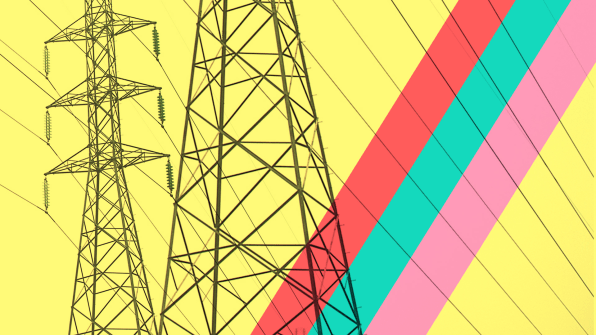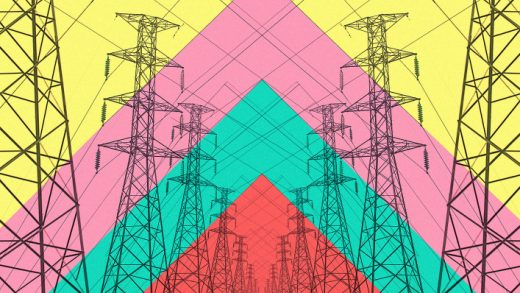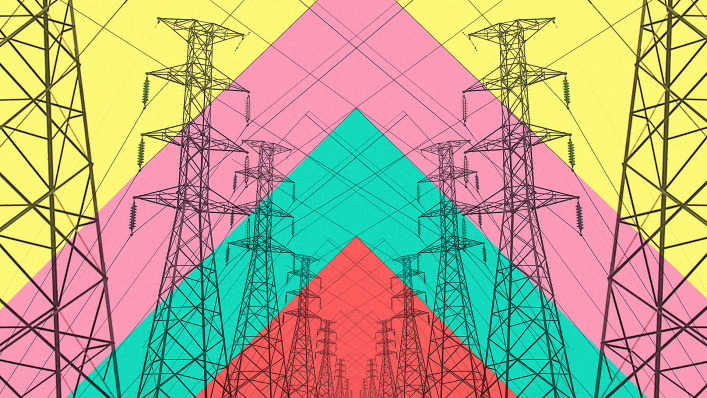Drift Is An Entirely New Type Of Power Utility That Lets You Take Control Of Your Electric Bill
Power utilities generally live in a world divorced from their customers. Yes, they might answer your call when there’s a billing issue, or the line outside is down. But they answer more to regulators and shareholders. State public utility commissions set the rates we pay for electricity. Most utilities are effective monopolies, with no competition. And, the way regulation works, they’re incentivized to be inefficient: Their mandate is to keep the lights on, at all costs, not to provide power at the lowest possible price.
In time, technology may begin to undercut this model, which effectively guarantees returns to companies (utilities are often criticized for “gold-plating” their capital investments, as higher costs mean higher profits). Solar panels and home storage systems allow homeowners to operate more independently of utilities (which is why many are resisting solar so hard). And the internet allows new forms of trading relationship that are more “peer-to-peer” (that is, supplier-to-customer) rather than “hub-and-spoke” (where utilities take up an enlarged role in the middle).
Drift, a startup utility from Seattle, is a glimpse of what that future could look like. Launched recently in New York, it links up independent upstate power producers with residents in New York City and aims to cut out the flabby center of the supply chain, including unnecessary middlemen and outdated software. Using machine learning, high-frequency trading, and a blockchain digital ledger for handling power trades, it claims to cut costs to the consumer by 10%-20%. And that’s just the beginning. As its supply network grows, it believes it can continue slashing prices.

Many corporates are already making end-runs around traditional utilities, setting up their own direct relationships with power producers. Google, Microsoft, Apple, and Facebook (to name a few) have all set up direct deals with wind farms hoping to tie in long-term low prices. Drift CEO Greg Robinson describes the company as an “energy buying team for everyone else” effectively replicating the deals struck by the tech giants.
“Google and Amazon are taking control of their own power buying, going around the utilities’ administrative bureaucracy to buy directly from power makers, or they’ll develop their own plants. We’re basically that energy buying team for everyone who can’t afford an energy buying team,” Robinson tells Fast Company.
Residential consumers pay a flat rate of $1 per week ($4.33 a month) plus whatever it costs to supply the power from wholesale markets. That doesn’t sound radical, but it is. While traditional utilities make more money the more power you use, Drift has an incentive to reduce its costs and end-prices. It makes money by signing up more customers, not by enlarging what it charges per customer. (Of course, it could raise the rates in the future but probably not before it’s won a customer base).
Though Drift is a utility and is taking on the customer relationship, it doesn’t actually take over the wires that supply your home. It leases distribution and transmission capacity based on the amount of power it needs. That again offers an incentive to be more efficient. If it can supply New York City customers from, say, Westchester County instead of Niagara Falls, it costs less money to distribute: local power is cheaper power.
“We are completely incentivized to lower the cost of energy,” Robinson says. “We want to find more local sources, more efficiencies, and strip out the middle man. We don’t lose money if your power bill goes down. But we probably won’t sign up many people if your bill goes up.”
Using a web dashboard, customers choose whether they want to prioritize the cheapest power or the cleanest. If enough renewables aren’t available on the grid, Drift will fill in with dirtier power (though generally clean power is always available in some form). Customers are billed on a seven-day basis, with hard data clearly visible on energy sources and types. (In reality, all power, whether it’s dirty or clean, is mixed together by the time it reaches your home. But, in paying for clean energy, Drift guarantees your money will go only to clean producers).
Drift has signed up small hydro producers, home developers with excess solar power, as well as large buildings that “shed” load at high-demand times (say, by turning off or turning down machinery). Its pitch to these producers is simple: we can provide a market for your small-scale supply where traditional buyers can’t. Generally, anyone with less than 1 MW is not an interesting proposition for wholesale markets, Robinson says.
It’s no accident that Seattle-based Drift is launching in New York first. The state’s Reforming the Energy Vision (REV) re-regulation program aims to open up power markets to new players in distributed generation, storage, and other services while maintaining the role of utilities as maintainers of the core infrastructure. It was easier to win approval for a new utility here than it might have been in other, less forward-thinking states. “We were inspired by REV in New York, rather than going to Boston or Chicago first. You start to see a group of regulators who understand the market and what the future opportunities are,” Robinson says.
Though it’s probably unfair to blame utilities for the regulatory structure they operate in, the electricity industry is surely ripe for change, including greater customer empowerment through technology. Power prices have risen almost 50% in the last 15 years, even as the price of natural gas–which drives more generation than any other energy source–has fallen. Distributed generation plus the internet allows power to be produced and distributed more efficiently, and there’s no reason customers should effectively pay for legacy grid investments. It can only be a matter of time before customers start demanding lower prices through startups like Drift, instead of the heavily-regulated prices offered through more traditional utilities.
In New York, the new startup lets you pick your power sources directly–and makes it cheaper.
Power utilities generally live in a world divorced from their customers. Yes, they might answer your call when there’s a billing issue, or the line outside is down. But they answer more to regulators and shareholders. State public utility commissions set the rates we pay for electricity. Most utilities are effective monopolies, with no competition. And, the way regulation works, they’re incentivized to be inefficient: Their mandate is to keep the lights on, at all costs, not to provide power at the lowest possible price.
Fast Company , Read Full Story
(76)














